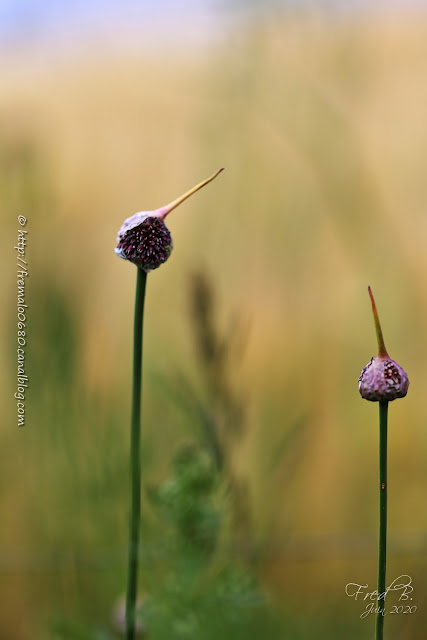Raphidiidae are very difficult to determine and even more on photo. We therefore remain for this one at Phaeostigma sp, undoubtedly notata group
28/06/2020
Casse-tête * Baffling problem
Raphidiidae are very difficult to determine and even more on photo. We therefore remain for this one at Phaeostigma sp, undoubtedly notata group
27/06/2020
Teigne * Ermine moth
In recent years spindles have been attacked by moths. Although less numerous this year, there were still some very visible cocoons. These ermine moth caterpillars (Yponomeuta sp probably Y. cagnagella because they are on a european spindle) are harmless to humans and animals. They can weaken the tree they attack if they are too numerous but so far the affected trees have all resisted.
26/06/2020
25/06/2020
Un ail, des aulx * Garlic
In the area, we mostly see wild garlic (Allium oleraceum), sometimes grape garlic (Allium vineale). At the stage of these photos, it is difficult to say what species we have there.
Meurthe et Moselle, juin 2020
21/06/2020
En extension * In extension
20/06/2020
Dévoreuse * Eater
Les adultes se nourrissent de pollen de préférence sur les Asteraceae jaunes et les marguerites.
Ici un adulte de clytre des saules (Clytra laeviuscula)
Clytrinae are beetles whose larvae enter the anthills to feed on the ant larvae. They are what are called sheath larvae because they protect themselves from thick materials to resist attacks by ants.
Adults feed on pollen preferably on yellow Asteraceae and daisies.
Here an adult of four spotted leaf beetle (Clytra laeviuscula)
Meurthe et Moselle, juin 2020
19/06/2020
Raide * Stiff
We start with the stiff hedgenettle (Stachys recta) which is often found on the edges of woods or in unmown meadows.
18/06/2020
Balade du jour * Walk of the day #1

14/06/2020
11/06/2020
Orchidées 2020: Ophrys apifera
Meurthe et Moselle, juin 2020
08/06/2020
Galle pointue du hêtre * Beech leaf gall midge
Elle ne semble pas préjudiciable à l'arbre.
The beech leaf gall midge is due to a small diptera Mikiola fagi which in the spring lay on the leaves of the beech. After hatching, the larva causes the growth of the leaf, which will serve as protection. From October, the gall detaches from the leaf and falls to the ground. The larva always winters away from this growth where pupation takes place.
It does not seem harmful to the tree.
Meurthe et Moselle, juin 2020
07/06/2020
Orchidées 2020: Anacamptis pyramidalis
One of our prettiest orchids is the pyramid orchid (Anacamptis pyramidalis). A time in decline, it would seem that it regain composure.
06/06/2020
05/06/2020
Symbole * Symbol
Poppies (here Papaver rhoeas) have become the symbol for the ban on pesticides. It must be said that they are the first victims. Today few fields still show us their pretty color, even if we start in our corner to review a little.
Meurthe et Moselle, mai 2020
04/06/2020
Orchidées 2020: Neottia ovata
Bien que très grande et très commune chez nous, la grande listère (Neottia ovata)
reste une orchidée très discrète. Elle aime les bois clairs et les
paturages humides. Très riche en pollen elle atire de nombreux insectes.
Lorsque ces derniers se pose sur le labelle, un liquide visqueux colle
le pollen au corps des insectes permettant un transport efficace. Elle aussi se nourrit en association avec un grand nombre de champignons.
Although very large and very common here, the common twayblade (Neottia ovata) remains a very discreet orchid. She likes sunny woods and wet pastures. Very rich in pollen it attracts many insects. When they land on the lip, a viscous liquid sticks the pollen to the body of insects allowing efficient transport. It also feeds in association with a large number of fungi.
Meurthe et Moselle, mai 2020


















































